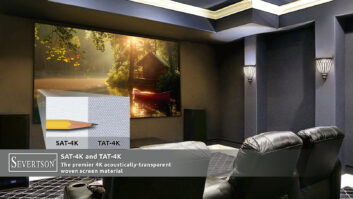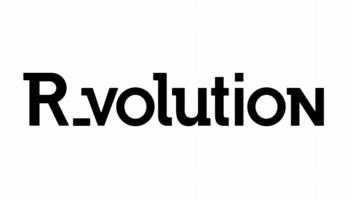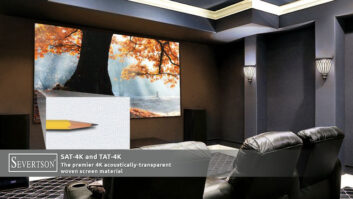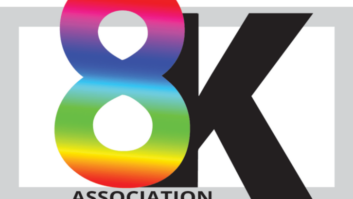Digesting the state of the video category, post-CES, we can talk of OLED vs. LCD, backlit vs. edge lit, HDR formats, streaming or physical media playback. It was all about 4K.
But, while it is still some time off from practical market availability, there were some items to note concerning what may be the next major video format change: 8K.
It’s not as though 8K (7,680 by 4,320) resolution is new to CES attendees; it has appeared in prototype form for at least the last three or four years. At the annual NAB Show in April, where broadcasters convene to get the latest on video technology, 8K has also been on view for a number of years. This is particularly from Japan’s NHK, which has committed to 8K broadcast of the 2020 Summer Olympic games in the new format.
That said, with the transition from HD to 4K/UHD still ongoing, and with some percentage of the population still watching SD sets, many wondered why even bother with 8K. This year’s CES made it clear that while advancements are being made, and we’re inching toward an 8K world, we’re not really even close yet.
Foremost at CES were hints of how 8K will be connected and what it will be viewed on. To the former, while super MHL, promoted last year as the way to connect 8K sources to matching displays was touted as the way to go, it was absent from this year’s show floor. Instead, the long-expected announcement of HDMI 2.1 seemed to put that technology at the head of the pack.
With all the bandwidth and data rate required for 8K, HDMI 2.1 is also backward compatible so that it is also able to carry current HDMI versions. Surprising to some, the new version will use the same connector as the current HDMI. However, for optimal resolution it was clear that new cables will be required.
This will also require new chips as current semiconductor solutions simply won’t be able to handle the fatter signals. TWICE spoke to representatives of some of the suppliers and based on what we heard it seems probable that the first products with HDMI 2.1 will not appear until late Q3 or early Q4.
Once the connection is made, we’ll need displays. Without them, all the 8K content in the world will be like trees falling in the video forest: No one will see it.
Based on what was on the floor and behind the scenes in closed suites, the display manufacturers seem to be standardizing on 65-inch and 98-inch screen sizes. Given that the benefits of 8K require either a larger screen size or a shorter viewing distance, that makes sense. However, the first readily available 8K set this March comes in a 32-inch screen size. Dell’s UltraSharp UP3218K will be available this spring at $4,999, and is intended for high-resolution graphics work. Use that size/price ratio to imagine what the pricing for much larger, consumer, 8K displays might be.
At this month’s CES one could see 65-inch sets from Samsung, Hisense, and Changhong, among others, with Funai (the licensee for the Philips and Magnavox brands in the U.S.) showing a concept set off the floor. A few 98-inch models were also on display, particularly pointing to their source as China’s Panda Electronics, who demonstrated a 98-inch 8K prototype using IGZO technology originally developed by Sharp.
For the 65-inch displays, the main source would appear to have been LG Display, a related, but different division than the LG Electronics company responsible for A/V, appliance and mobile products. Its private display room showcased its 8K display panels, which are almost certainly at the heart of many, but not all, of the prototype models on the Show floor.
To complete the 8K picture, some content is needed. Japan’s NHK did some extensive production testing with 8K content at the Rio Olympics and February’s Super Bowl will have a large complement of 8K cameras, but neither event was, or will be broadcast in 8K. With broadcasters and program distributors still absorbing the cost of HD, let alone 4K, any 8K content beyond these experiments is some time off.
However, one piece of gear that will allow 8K production, particularly for VR, was on display at CES. China-based Insta360 showed its Pro 8K camera, specifically designed to create the highest resolution content. Projected for delivery later this year for $3,000, this is an interesting way to do your own experimentation with 8K while we wait for the full ecosystem to become available.
Post-CES, this leaves us with a mixed picture for 8K. On one hand, there were more 8K prototypes at CES than ever before, with some even looking to be real enough that they carried model numbers. On the other hand, there is still more that is needed for 8K to become an everyday and, most importantly, available, real-world reality. The job is to prevent customers who read about it in the general, enthusiast or business press from staying on the sidelines rather than purchase a 4K set today.
The old saying “SWAT: Sell What’s Available Today” has never been as applicable as it will be here. The latest 4K sets from CES more than do the job, and 8K is more than a few years off in the practical distance.












